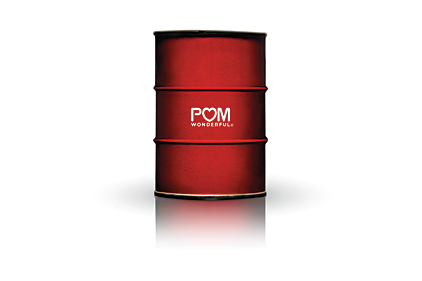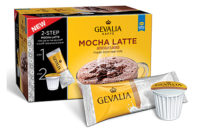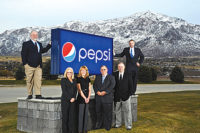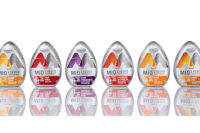In comic books, superheroes like Batman, Spiderman and Superman use their special powers to protect cities and the people within them from harm. Similarly, the human body is constantly on the defensive to protect itself from things like free radicals. This is where antioxidants have the opportunity to swoop in and save the day.
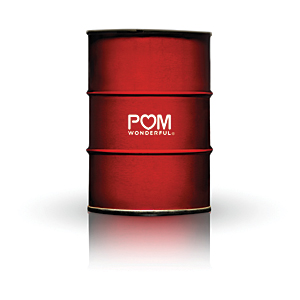
|
| Pom Wonderful launched 100 percent pomegranate concentrate and POMx pomegranate powder last year. |
“Every one of us is permanently exposed to oxidation,” says Gary Vorsheim, vice president of extract sales for Secaucus, N.J.-based Martin Bauer Inc., a division of the Martin Bauer Group. “This is a natural process that may have undesirable consequences for the human body: Free radicals form and cause damage to cells and the human genetic material.”
Fortunately, antioxidants have been shown to reduce free radical activity, says Brad Paris, vice president and general manager of global produce for Pom Wonderful, Los Angeles. Consumers are increasingly interested in natural products such as antioxidants, he adds. As a result, many suppliers are receiving more requests for antioxidant ingredients, experts say.
“Humans have long sought to retard the aging process, and oxidative stress is implicated in this process by the damage that it causes to cells and biological molecules such as proteins, lipids and DNA,” says Cal Bewicke, president of Ethical Naturals, San Anselmo, Calif. “It is now widely accepted that antioxidants play a beneficial role in retarding these processes associated with aging.”
Thanks to the association between antioxidants and long-term health benefits, there seems to be a growing interest in this nutritional category, he adds.
According to Chicago-based Mintel’s Global New Products Database, more than 250 beverages containing antioxidants launched in the United States last year. Foods and beverages with high antioxidant potential are in particular demand, Martin Bauer’s Vorsheim says. Part of the interest in antioxidants might even come from consumers’ ability to self-treat using some of these ingredients, suggests Sam Wright IV, chief executive officer for The Wright Group, Crowley, La.
“Consumers are looking for specific antioxidants and other nutritional components, which may be insufficient in a typical diet, that may help prevent or control health issues they may be concerned about,” Wright says.
Tried and true
The Wright Group creates nutritional ingredient platforms, antioxidant systems, and value-added and microencapsulated ingredients including a wide variety of antioxidants such as coenzyme Q10 (CoQ10), vitamins C and E, beta-carotene and other carotenoids, as well as natural botanicals like polyphenols and flavonoids, Wright says.
“The antioxidants most in demand are still vitamin C, vitamin E and carotenoids,” he says. “They tend to be ‘bullet-proof’ from a consumer understanding, safety and regulatory standpoint. The others are specified mostly in condition-specific formulas positioned against discrete market segments.”
Philip L. Kupper, senior scientist with Wild Flavors Inc., Erlanger, Ky., also notes that vitamins A, C and E are used most often. However, he also points out that the company’s H.I.T.S. (Health Ingredient Technology & Solutions) line offers more than 30 antioxidants, including ingredients such as lingonberry extract and resveratrol.
“For oil-soluble antioxidants such as [CoQ10 for] heart health and lutein [for] skin and eye health, Wild offers stable, clear and cloudy emulsions,” Kupper says. “Wild’s emulsion technology allows for the use of these oil-soluble ingredients in broader beverage applications.”
The company’s emulsion antioxidant systems also eliminate the “ringing” that is frequently seen in functional beverages, Kupper says, and its extracts are deflavored, enabling beverage-makers to use higher, more efficacious levels of antioxidants.
Wild’s most requested antioxidant ingredients are tea, apple and yerba mate, which feature specific levels of polyphenols that are widely known for their antioxidative effects, Kupper says.
Among its customers, Martin Bauer receives the highest number of requests for black tea and green tea extracts, which contain catechins and polyphenols, Vorsheim says.
“The antioxidant potential of green tea flavonols and [epigallocatechin gallate] (EGCG), in particular, is much greater than that of vitamin C or vitamin E,” he says. “Moreover, flavonols have virostatic and bacteriostatic effects.”
Popular herbal extracts that are high in antioxidant potential include grape seed, elderberry, pomegranate and hibiscus, among many others, he adds.
“As in other fields, when it comes to antioxidant products, consumers are looking for natural ingredients such as herbal extracts,” Vorsheim says.
Ethical Naturals offers a patented whole grape extract, which is sold under the VinCare and ORAC-15M brand names. The extract is standardized to contain more than 80 percent polyphenols and 15,000 oxygen radical absorbance capacity (ORAC) units per gram, Bewicke says. It also offers SFB, which is an extract of whole grape, goji, bilberry, chokeberry, cranberry, mangosteen, blueberry and pomegranate that is standardized for 40 percent polyphenols and 7,500 ORAC units per gram, he adds. All of the extracts are generally recognized as safe (GRAS)-affirmed.
Outside of fruit ingredients, BI Nutraceuticals offers a variety of antioxidant ingredients, such as green tea and omega 3s and 6s, and ancient grains, which are popular, says Randy Kreienbrink, director of marketing for the Long Beach, Calif.-based company. Some of the ancient grains gaining in popularity include chia, quinoa and omegas, he adds.
“At least here in North America, I think it’s grains that are coming back into popularity,” Kreienbrink says. Part of the reason for the growth of omegas from a grain source is due to their neutral flavor profile, he says.
Although consumers don’t always know what level of antioxidants to look for, they are interested in seeing antioxidants labeled on food and beverages, he adds. To ensure the integrity of its ingredients, BI Nutraceuticals uses a high-pressure steam-type process and a tracking system.
Fruity benefits
Known for its pomegranate juices in curvy bottles, Pom Wonderful launched a line of high-quality, industrial pomegranate ingredients last year. It currently offers 100 percent pomegranate concentrate and POMx pomegranate powder as industrial ingredients, Paris says. The concentrate is available in both powder and liquid forms and can be used in a range of applications including food, beverages, powdered beverages and supplements, he adds.
Another popular fruit for its antioxidant properties and health benefits is blueberry.
“With the good news about antioxidants and health benefits in the media, positive consumer attitudes, good availability and a range of formats, blueberries are well-positioned to meet a range of beverage development needs,” says Tom Payne, industry specialist for the U.S. Highbush Blueberry Council, Folsom, Calif.
Consumers see blueberries as a value-added ingredient because they are linked to heart health, anti-aging properties, cancer prevention, improved eyesight and better memory, he adds.
Highbush blueberries are available year-round in a variety of formats including fresh, dried, frozen, freeze-dried or individually quick frozen (IQF), puree, concentrate juice and plump osmotically preserved blueberries, Payne says. These formats add health benefits as well as taste to a variety of beverage applications, he adds.
Blueberries have always been popular for their flavor profile and health benefits, but their popularity soared with the advent of antioxidant awareness, he says. BI
